
Journal of Physical Chemistry Letters
Scope & Guideline
Catalyzing Breakthroughs in Cutting-edge Research
Introduction
Aims and Scopes
- Advances in Photocatalysis and Energy Conversion:
The journal frequently publishes works on photocatalytic processes, particularly those involving metal halide perovskites, nanocrystals, and their application in solar energy conversion and hydrogen production. - Nanotechnology and Materials Science:
Research on the synthesis, characterization, and application of nanomaterials, including their electronic, optical, and catalytic properties, is a central theme. This includes studies on quantum dots, metal-organic frameworks, and layered materials. - Computational Chemistry and Simulation Techniques:
A significant focus is placed on computational methods, including ab initio calculations, molecular dynamics simulations, and machine learning approaches to explore chemical reactions, material properties, and dynamic processes. - Charge Dynamics and Exciton Behavior:
The dynamics of charge carriers and excitons in various systems, including organic and hybrid materials, is extensively studied, contributing to the understanding of photophysical processes and the development of optoelectronic devices. - Interfacial Chemistry and Surface Phenomena:
Research addressing the interactions and properties at the molecular level at interfaces, particularly in relation to catalysis, energy storage, and sensor applications, is prominently featured. - Environmental and Biological Applications:
The journal also highlights studies that connect physical chemistry principles to environmental issues and biological systems, such as pollutant degradation and biomolecular interactions.
Trending and Emerging
- Machine Learning and AI in Chemistry:
The integration of machine learning and artificial intelligence into chemical research is rapidly gaining traction. Researchers are employing these tools for predictive modeling, optimization of experimental conditions, and analysis of complex datasets. - Sustainable Chemistry and Green Technologies:
There is a growing emphasis on sustainable practices and materials in chemical research, including the development of lead-free perovskites, recyclable materials, and energy-efficient catalytic processes. - Exciton Dynamics and Photonic Applications:
Studies focusing on exciton dynamics, particularly in two-dimensional materials and hybrid systems, are trending. This includes research on exciton-polaritons and their applications in photonic devices. - Emerging Nanomaterials for Energy Applications:
Nanomaterials designed for energy applications, such as advanced batteries, supercapacitors, and photocatalysts, are increasingly featured, reflecting a shift toward practical applications of fundamental research. - Dynamic and Time-Resolved Spectroscopy:
Techniques that capture ultrafast processes, such as time-resolved spectroscopy and pump-probe methods, are on the rise, showcasing the importance of understanding transient states in chemical reactions.
Declining or Waning
- Traditional Organic Photochemistry:
There has been a noticeable decline in publications focusing solely on traditional organic photochemistry, as the field shifts towards more integrated approaches that combine physical chemistry with materials science and nanotechnology. - Static Analytical Techniques:
Research employing static analytical methods, such as conventional spectroscopy without dynamic elements, is becoming less prevalent as dynamic, time-resolved techniques gain prominence for their ability to provide insights into fast processes. - Inorganic Coordination Complexes:
The exploration of classical inorganic coordination complexes appears to be waning, with a shift toward more complex systems involving hybrid materials, nanostructures, or those that exhibit unusual electronic properties. - Low-Dimensional Systems without Functionalization:
Studies on low-dimensional materials that do not incorporate functionalization or hybridization strategies are becoming less common, as researchers increasingly focus on enhancing properties through chemical modifications.
Similar Journals

Annual Review of Physical Chemistry
Bridging Theory and Application in Physical ChemistryAnnual Review of Physical Chemistry, published by Annual Reviews, stands as a premier source of comprehensive review articles in the field of physical chemistry. With a prestigious impact factor and a strong reputation reflected in its Q1 rankings in both Physical and Theoretical Chemistry and Medicine (Miscellaneous), this journal is essential for researchers seeking to stay at the forefront of advancements in the discipline. Covering a wide array of topics, the Annual Review of Physical Chemistry synthesizes the latest findings, trends, and methodologies, providing a vital resource for professionals and students alike. Although it does not offer open access, its scholarly rigor and in-depth analyses ensure it occupies a critical space in academia. Its consistent publication since 1975 guarantees that it has historical significance and relevance, making it a cornerstone for those engaged in cutting-edge research within the realm of physical chemistry.
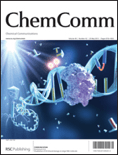
CHEMICAL COMMUNICATIONS
Illuminating the pathways of chemical innovation.Chemical Communications, published by the esteemed Royal Society of Chemistry, is a prominent journal within the field of chemical science, focusing on the dissemination of cutting-edge research in a variety of sub-disciplines including catalysis, materials chemistry, and electronic materials. Operating without an open access model, this journal provides critical insights from contributors around the globe, enhancing our understanding of complex chemical interactions and innovative applications. Ranked in the top quartile for several categories such as Ceramics and Composites, and Metals and Alloys, Chemical Communications boasts impressive Scopus rankings, securing strong positions across multiple fields and showcasing its influence within the scientific community. The journal is committed to advancing knowledge and fostering collaboration among researchers, professionals, and students, making it an invaluable resource for those looking to stay abreast of the latest advancements in chemistry and materials science. With a publication history dating back to 1965 and continuing into 2024, its rich archive serves as a vital repository of chemical research and development.

RARE METALS
Transforming Ideas into Metallic RealitiesRARE METALS is a prestigious journal at the forefront of materials science, dedicated to advancing the understanding of metallic materials and their applications. Published by the Nonferrous Metals Society of China, this journal has established itself as a leading platform for cutting-edge research in areas including condensed matter physics, materials chemistry, metals and alloys, and physical and theoretical chemistry. With an impressive impact factor and consistently ranked within the Q1 quartile across multiple categories, RARE METALS ranks highly on Scopus, illustrating its significant contribution to the field—such as a remarkable rank of 11/176 in Materials Science for Metals and Alloys and 23/434 in Condensed Matter Physics. Although it operates under a subscription model, its rigorous peer-review process ensures that only the most impactful research is published, making it an essential resource for researchers, professionals, and students engaged in material innovation. Join the global network of materials science by contributing to or exploring the wealth of knowledge RARE METALS offers, fostering advancements in areas vital for technological progress and industrial applications.
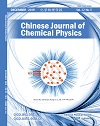
CHINESE JOURNAL OF CHEMICAL PHYSICS
Innovating Methodologies in Chemical PhysicsChinese Journal of Chemical Physics, published by the Chinese Physical Society, serves as a pivotal platform for advancing the field of chemical physics, encompassing groundbreaking research and innovative methodologies since its inception in 2000. With an ISSN of 1674-0068 and E-ISSN of 2327-2244, the journal has established itself within the academic community, reflected in its 2023 classification as Q3 in Physical and Theoretical Chemistry and a Scopus rank of #142 out of 189, representing the 25th percentile in this competitive field. Although it does not currently operate as an open-access publication, its commitment to disseminating pivotal scientific research continues to attract scholars and professionals alike. The journal aims to bridge the gap between theoretical principles and practical applications in chemical physics, thereby fostering collaboration and innovation. By contributing significantly to the discourse in this dynamic domain, the Chinese Journal of Chemical Physics remains an essential resource for researchers, professionals, and students eager to stay abreast of contemporary developments.
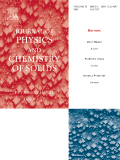
JOURNAL OF PHYSICS AND CHEMISTRY OF SOLIDS
Illuminating the Science of SolidsJOURNAL OF PHYSICS AND CHEMISTRY OF SOLIDS, published by Pergamon-Elsevier Science Ltd, is a distinguished international journal that has been at the forefront of disseminating cutting-edge research in the fields of physics, chemistry, and materials science since its inception in 1956. This journal, which is recognized for its high impact in the Q2 category across multiple subjects—including Chemistry (miscellaneous), Condensed Matter Physics, and Materials Science—serves as a vital platform for researchers, professionals, and students to engage with significant advances in solid-state physics and chemistry. With Scopus rankings placing it in the top 15% of its field across various domains, the journal plays a crucial role in shaping the scientific dialogue surrounding materials properties, synthesis, and applications. Although it does not currently offer open access options, the presented research is widely recognized for its quality and relevance, ensuring that published works contribute meaningfully to ongoing scholarly discussions.
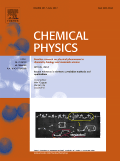
CHEMICAL PHYSICS
Illuminating the Path of Chemical Knowledge Since 1973.CHEMICAL PHYSICS is a premier international journal published by Elsevier, dedicated to advancing the field of theoretical and experimental chemistry, particularly within the physical domain. Since its inception in 1973, this journal has served as a platform for disseminating cutting-edge research, fostering collaboration among researchers and professionals in the community. With a notable impact factor and recognized in the Scopus rankings, CHEMICAL PHYSICS holds esteemed positions in two categories: Q3 in Physical and Theoretical Chemistry and Q2 in Physics and Astronomy (miscellaneous). Published in the Netherlands, the journal features high-quality articles that cover a broad spectrum of topics, aiming to deepen understanding of chemical phenomena through innovative approaches. Although open access options are not currently available, the journal remains invaluable for researchers, students, and professionals seeking to stay informed about the latest developments in chemical physics. With convergence years extending from 1973 to 2025, CHEMICAL PHYSICS continues to be a significant contributor to the academic discourse in its field.
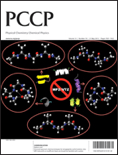
PHYSICAL CHEMISTRY CHEMICAL PHYSICS
Unlocking the Mysteries of Matter and EnergyPhysical Chemistry Chemical Physics is a premier interdisciplinary journal published by the Royal Society of Chemistry, dedicated to advancing the fields of physical chemistry and chemical physics. With an impressive impact factor and categorized in the Q2 quartiles for both Physical and Theoretical Chemistry and Physics and Astronomy, this journal serves as a vital platform for the dissemination of high-quality research findings from 1999 through 2024. Based in the United Kingdom, the journal is committed to providing open access to its articles, enhancing the visibility and accessibility of research to a global audience. Researchers, professionals, and students alike are encouraged to contribute to this esteemed journal, ensuring impactful discussions and significant advancements in the understanding of chemical and physical phenomena. With strong Scopus rankings underscoring its relevance, Physical Chemistry Chemical Physics stands out as an essential resource for specialists striving to innovate and excel within these dynamic fields.

ACS Physical Chemistry Au
Pioneering discoveries in physical chemistry and beyond.ACS Physical Chemistry Au, published by the American Chemical Society, is a pioneering open-access journal that provides a dynamic platform for researchers and professionals in the field of physical chemistry and its interdisciplinary connections. Since its inception in 2021, the journal has made significant strides in disseminating high-quality research, evidenced by its impressive standings in various categories, including Q1 rankings in Chemistry (miscellaneous), Computational Theory and Mathematics, and Physical and Theoretical Chemistry as of 2023. With a commitment to enhancing the visibility and accessibility of scholarly work, ACS Physical Chemistry Au offers a robust Open Access model, ensuring that groundbreaking research is freely available to a global audience. The journal serves as an essential resource for researchers, students, and practitioners seeking to advance knowledge in computational theory, physical chemistry, and their applied sciences. With an ISSN of N/A and an E-ISSN of 2694-2445, the journal is poised to make a lasting impact in the academic community.
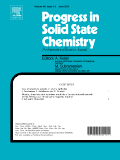
PROGRESS IN SOLID STATE CHEMISTRY
Pioneering Insights in Condensed Matter PhysicsPROGRESS IN SOLID STATE CHEMISTRY, published by PERGAMON-ELSEVIER SCIENCE LTD, serves as a pivotal platform for disseminating cutting-edge research and advancements in the field of solid state chemistry. With an impressive impact factor and a respected status, this journal consistently ranks in the Q1 category across multiple disciplines, including Condensed Matter Physics, Materials Science, and Physical and Theoretical Chemistry. Following a rigorous peer-review process, it features articles that explore theoretical frameworks and experimental findings, thereby fostering innovation and collaboration among researchers and professionals. Although it does not adopt an open access model, its substantial reach and high Scopus rankings—19th in Condensed Matter Physics, 14th in Physical and Theoretical Chemistry, and 48th in General Materials Science—underscore its influence in shaping the future of materials research. Established in 1964, the journal continues to contribute significantly to the academic community, bridging the gap between theory and practical application in solid state materials.

Journal of the American Chemical Society
Exploring the Depths of Chemical DiscoveryJournal of the American Chemical Society (JACS), published by the American Chemical Society, stands as a pivotal publication in the field of chemistry, facilitating the dissemination of significant research findings since its inception in 1879. With an impressive impact factor and esteemed rankings placing it in the Q1 quartile across various categories—including Biochemistry, Catalysis, and Colloid and Surface Chemistry—JACS continues to serve as a vital resource for scientists, professionals, and students alike. Researchers choose JACS for its rigorous peer-review process, ensuring high-quality content that shapes the landscape of modern chemistry. The journal's extensive scope encompasses pivotal advancements and innovative methodologies, reflecting the evolving dynamics of chemical research. With access options being traditional subscription-based, it remains crucial for institutions and individuals to engage with its latest issues to stay at the forefront of chemical science advancement.